|
How to find the Acute Coronary Syndrome
AAA Home
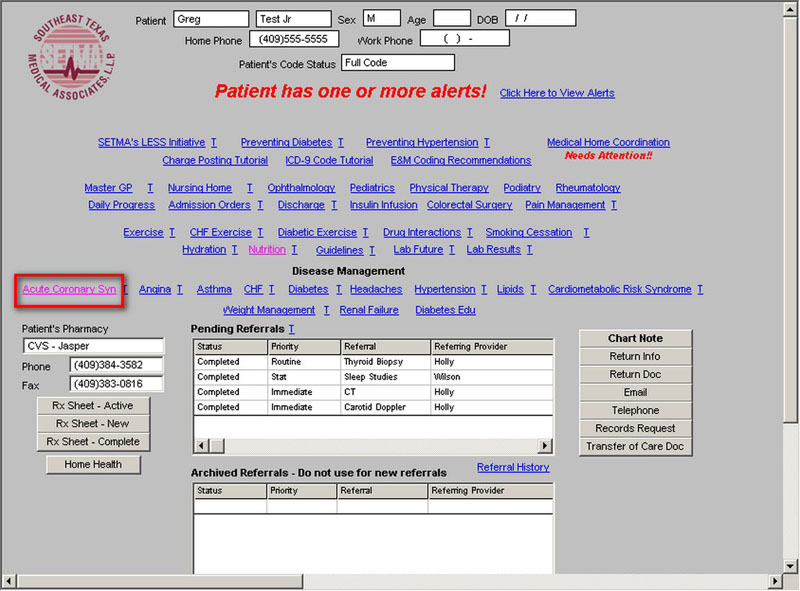
Master Tool Bar Icon
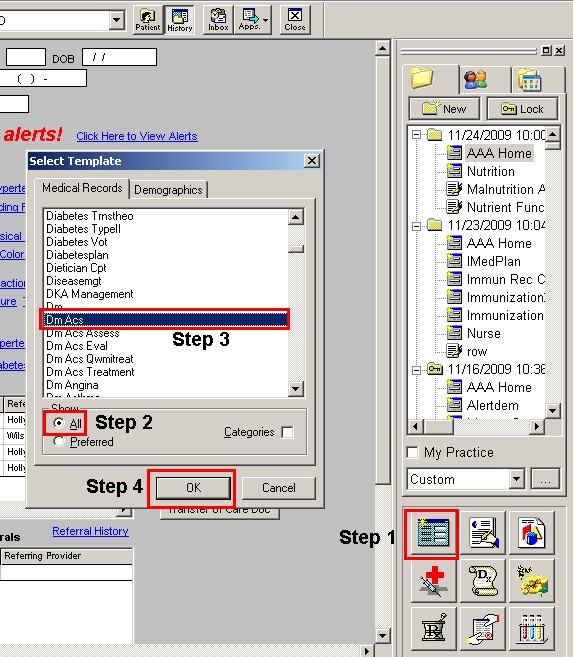
- When the Template button is clicked you will be presented with the preference list.
- If the Acute Coronary Syndrome template is listed as one of your preferences, select it.
- If it is not one of your preferences, select the All radio button and scroll down until you find it in the list. Then you may select the template by either double-clicking on the name or single click on the name (so that it is highlighted in blue) and then click the OK button.
NOTE: For more on how to set up your preferences, Click Here
One of the most difficult and one of the most important differential diagnoses which confront physicians in the outpatient setting is the distinguishing between chronic stable angina and the acute coronary syndrome. The former is a relatively benign condition which can be safely and successfully treated in the outpatient setting. The latter is a potentially fatal condition which requires immediate intervention to decrease the mortality risk of the patient.
This suite of templates in conjunction with the Angina Suite of Templates has been developed in order to aid the healthcare provider in making that distinction accurately and quickly.
The Acute Coronary Syndrome Suite of Templates consists of the following templates:
- Master Acute Coronary Syndrome
- Q-Wave
- Evaluation
- Differential Dx
- NESTMI/Unstable Angina Treatment
- Q-Wave MI Treatment
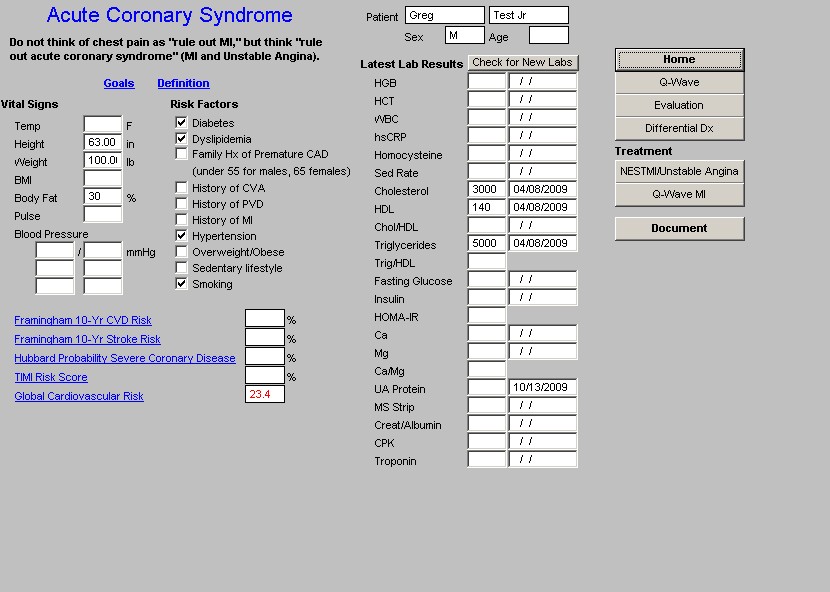
The Master Acute Coronary Syndrome Template Content:
The following statement begins the suite, “Do not think of chest pain as ‘rule out MI,’ but think ‘rule out acute coronary syndrome’ (MI and Unstable Angina).”
The first button is entitled Goals. It contains six goals of the evaluation of the patient for ACS. They are:
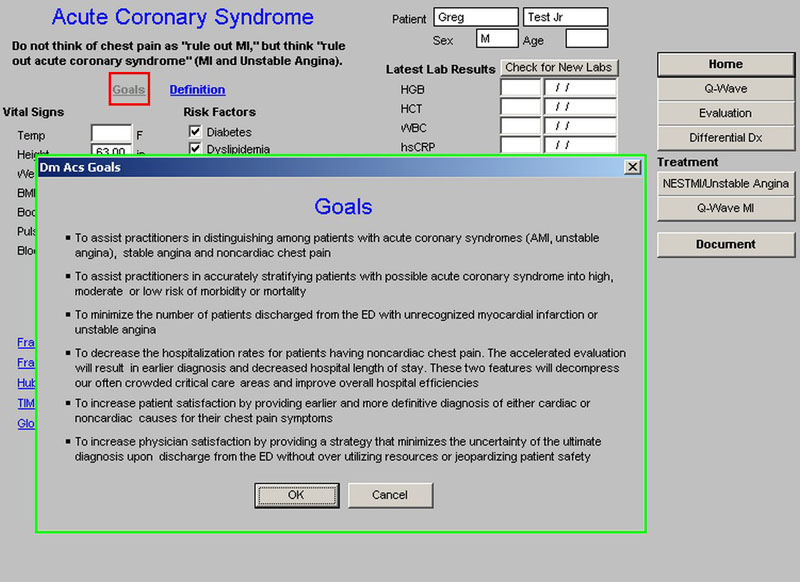
The second button is entitled Definition. It states:
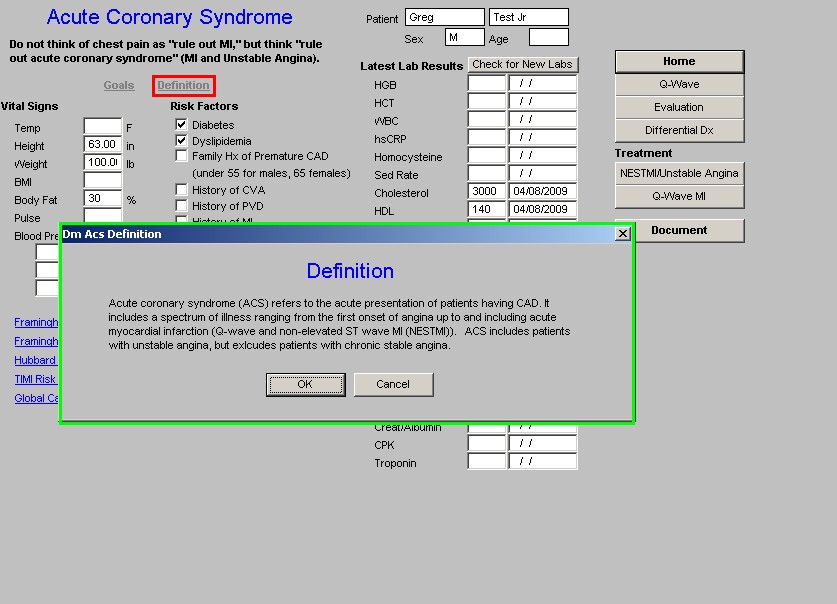
In the first column of the Master Acute Coronary Syndrome template, the following then appears:
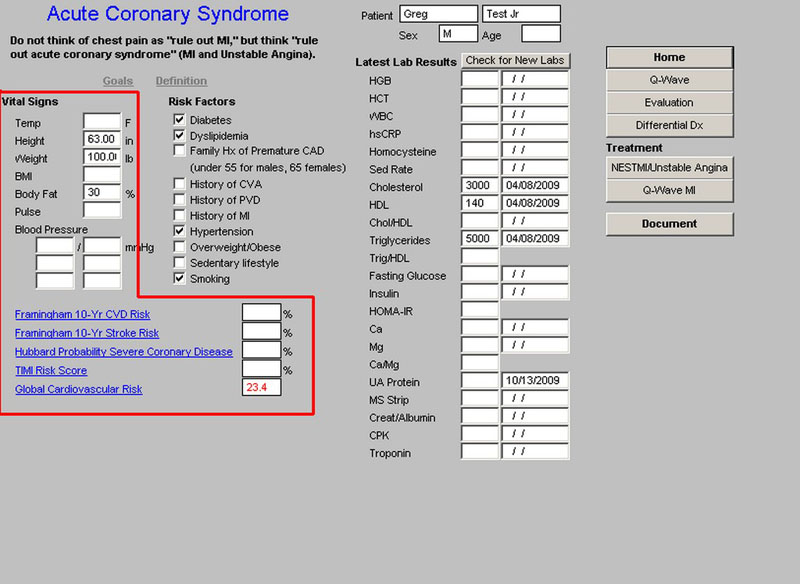
In the second column, 10 Risk Factors are listed which increase the probability that the patient could be having the ACS.

In the third column, 22 lab tests are displayed which are relevant to the evaluation of the patient potentially with the ACS. There is a button entitled Check For New Labs which allows you to import the latest lab values for the evaluation.
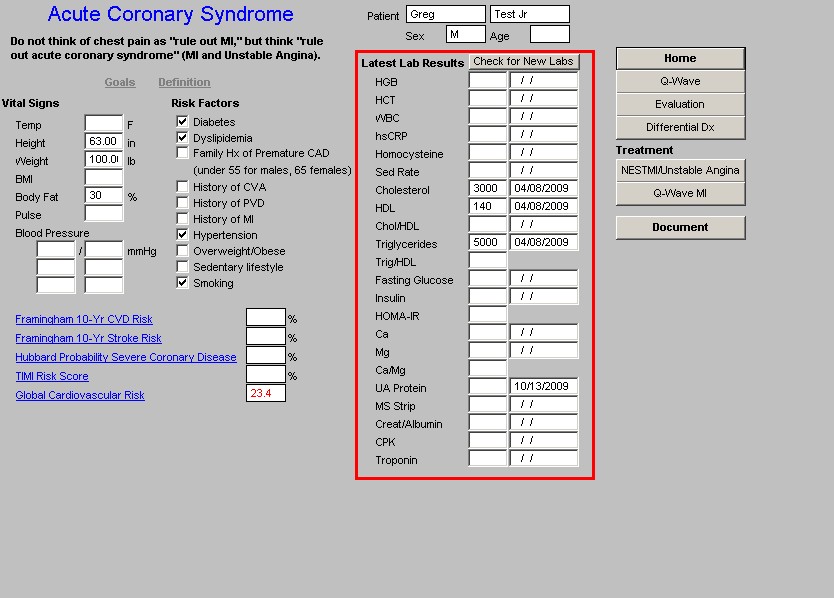
In the fourth column are the navigation buttons followed by the button entitled Document, which when depressed creates a document for this suite of templates.
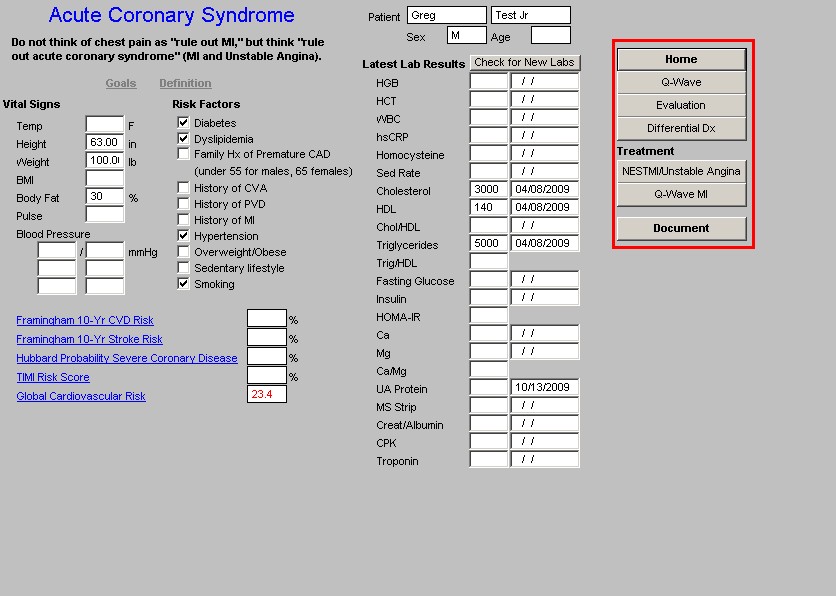
Q-Wave Template
The full name of this template is “Comparison of Q wave and non-Q wave MI.” Nine characteristics of a Q-Wave MI and 10 Characteristics of a Non-Q Wave MI are displayed.
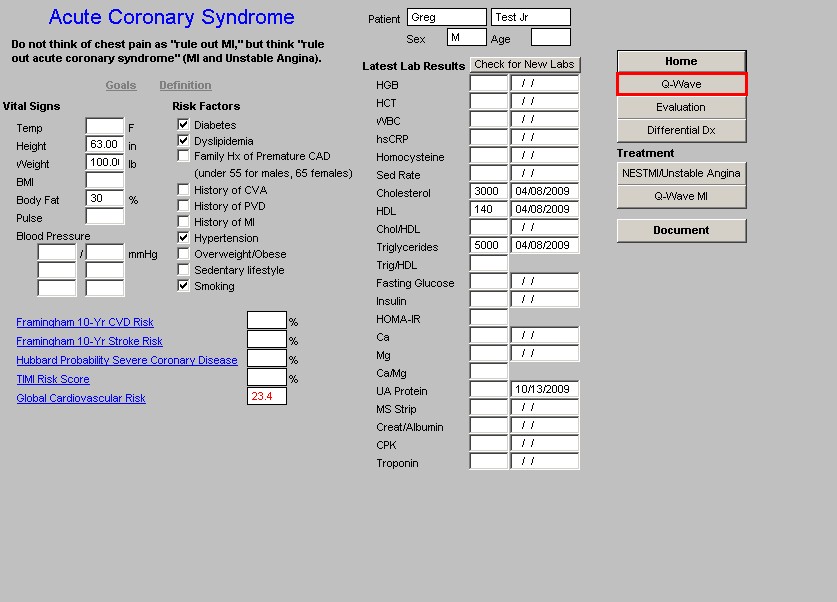
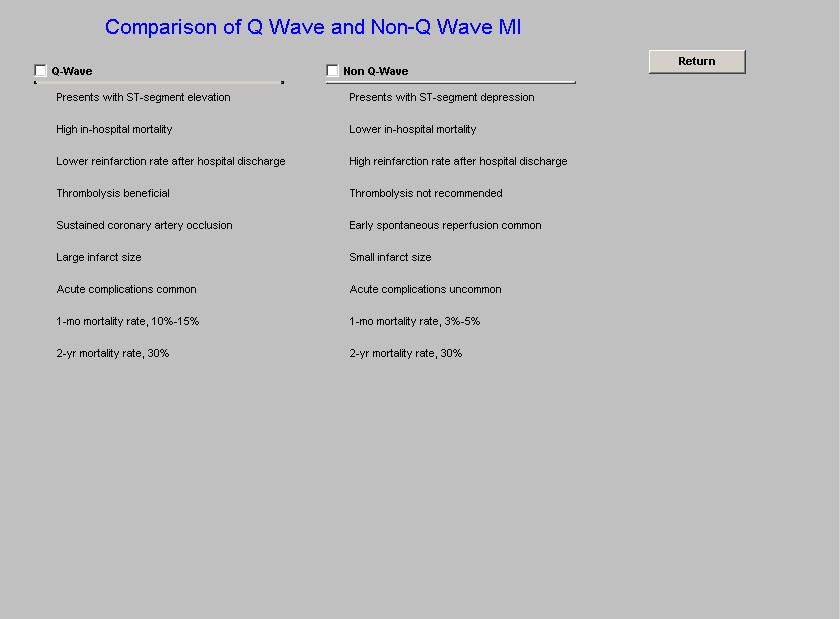
Evaluation Template
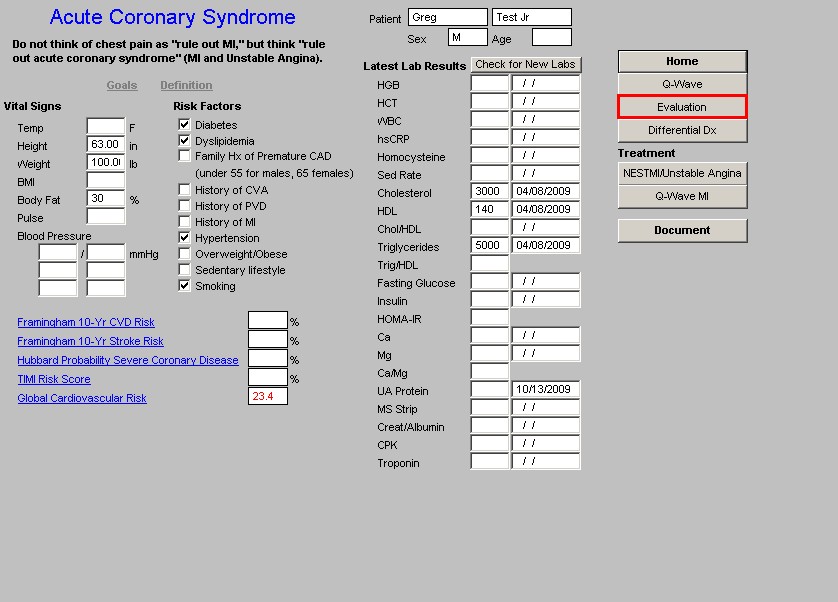
The full name of this template is, “Key Diagnostic Items to be Elicited for Assessing Significant CAD in Patients with Chest Pain Suggestive of Acute Coronary Syndrome.”

There are ten parts to this template. They are explained below:
The first two are:
- Time of Onset of Pain – there is a place to document the date and time of onset of the pain.

- Duration and persistence of Pain – there is a place to document how long the pain has lasted.

The next two are:
- Character of Pain – there are two buttons here which link you to the Angina Suite of templates for Type of Chest Pain and Class of Angina. For more information on Angina, Click Here.

- Associated Symptoms.—four angina equivalents are displayed so that you can note them if they are present.

The next two are:
History of AMI or Invasive Procedures – there is a link here to the Cardiac History
Age and Gender – these two elements are displayed automatically

Associated Risk Factors – there is a place to document the presence of the five major risk factors for coronary artery disease

Drug Use – if patient’s use or non-use of elicit drugs is automatically noted from the History template. A link to the List of Elicit Drugs in the patient’s History is present here
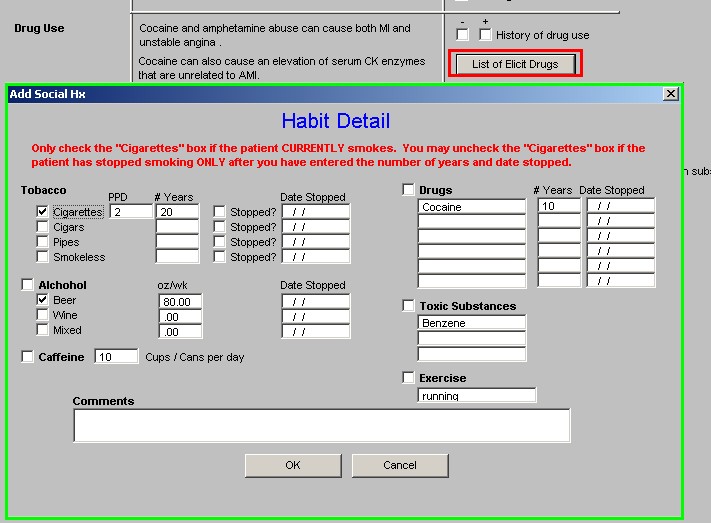
Physical Examination – this lists the Physical Findings suggestive of CAD and Signs/cause of secondary unstable angina.
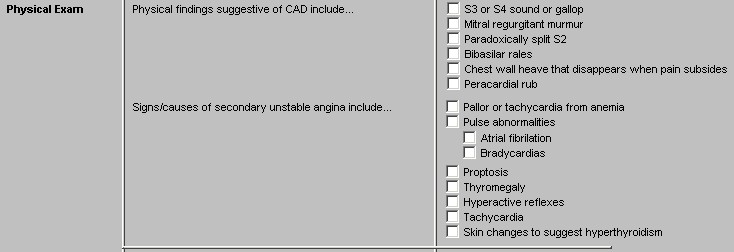
Next there is:
ECG – there is a link to the ECG Report from the Procedures template in NextGen.

Differential Diagnosis Template
This is a pop-up which displays other potential causes of the pain which is commonly associated with the Acute Coronary Syndrome.
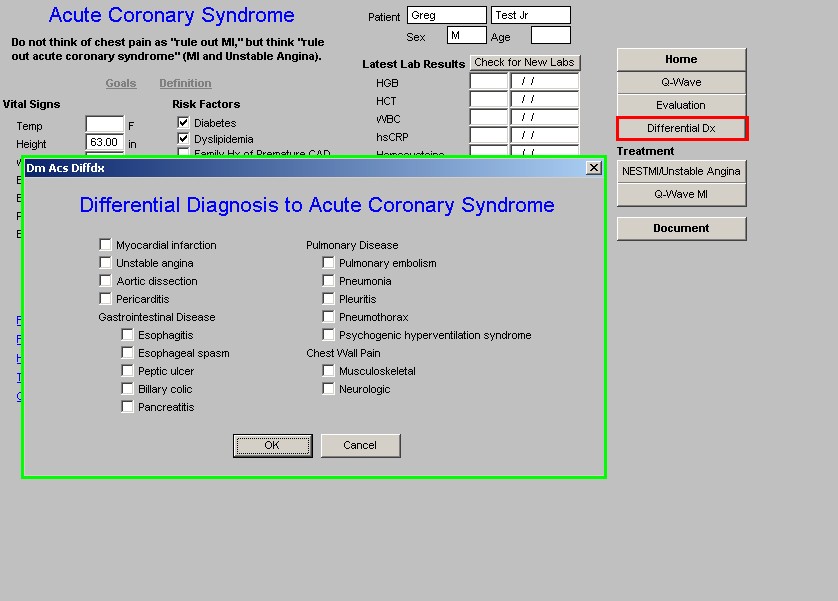
NESTIMI and Unstable Angina Treatment
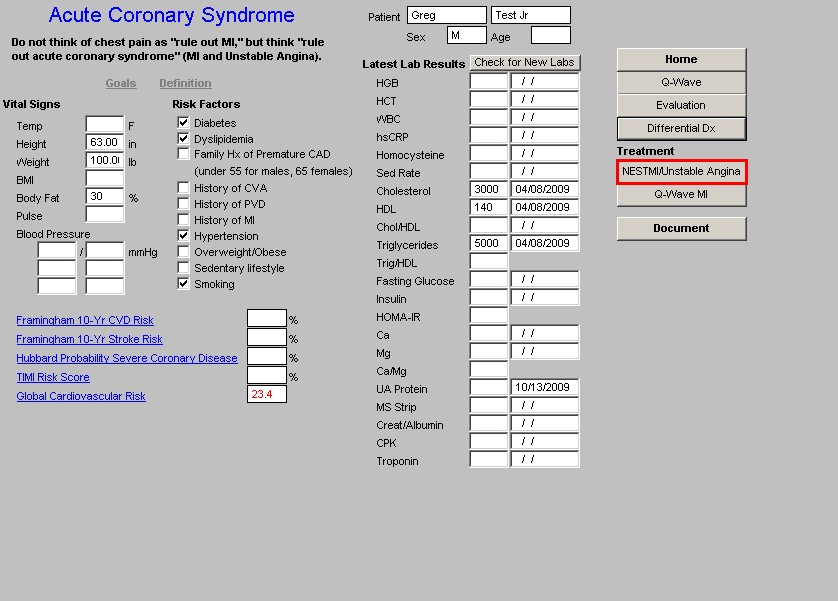
This template begins with the statement, “Once unstable angina or non-SET Segment has been identified, standard anti-ischemic treatments should be initiated.”
The template then displays 15 standard anti-ischemic treatments which can be initiated. Two of these Calcium Channel Blockers and Thrombolytic Therapy are not generally used with unstable angina and/or non-ST-segment elevation MI. All of the treatments which are in blue have links to documents which give more information about each of these treatments.

Under the navigation button to the right there are three information documents:
- AHA Antiplatelet Recommendations
- AHA Anticoagulant Recommendations
- Glycoprotein Trials
Q-Wave MI Treatment Template
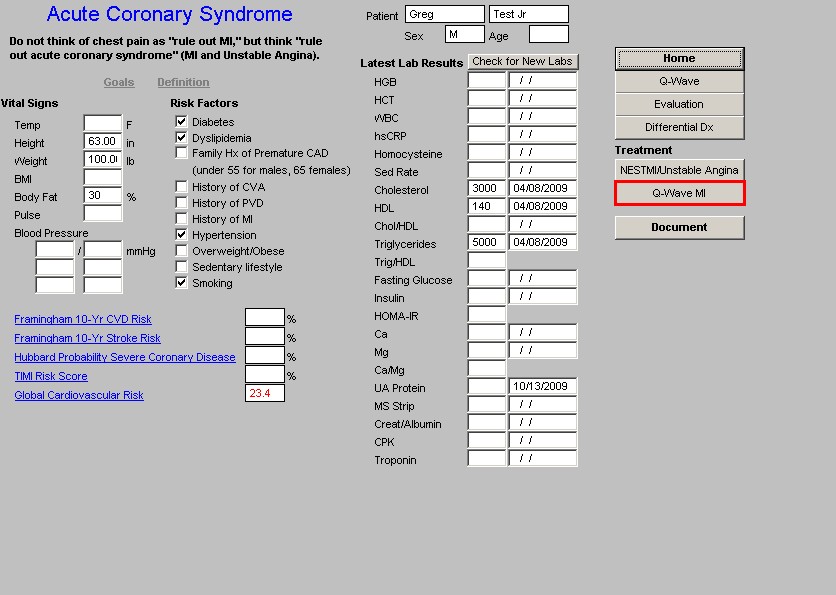
At the top of this template is the statement, “Glycoprotein IIb/IIIa therapy is recommended in moderate to high-risk patients.”
The instruction is then given, “Select one of the following options…
- Is Cath lab treatment planned within 12 hours?
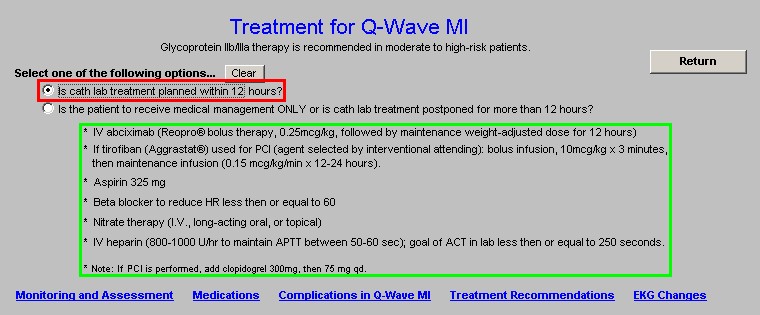
- Is the patient to receive medical management ONLY or is cath lab treatment postponed for more than 123 hours?
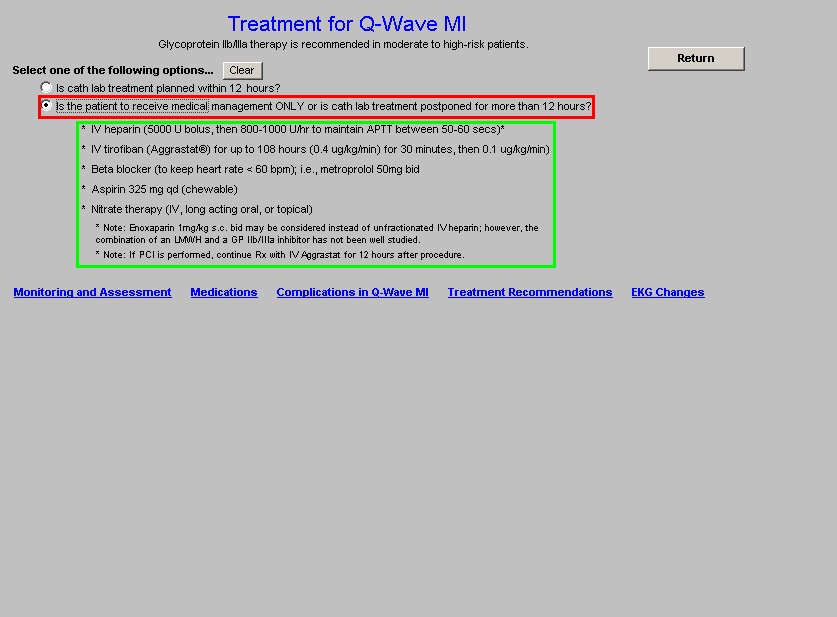
At the bottom of this template, there are five links:

- Monitoring and Assessment
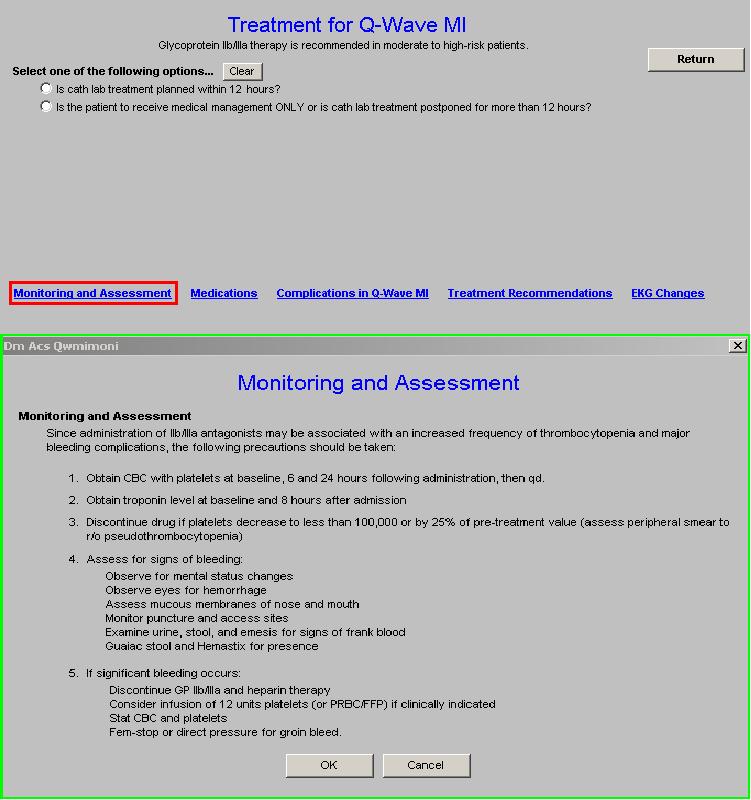
- Medications – this is an electronic PDR for 9 categories of medications which are used in the treatment of Acute Coronary Syndrome.
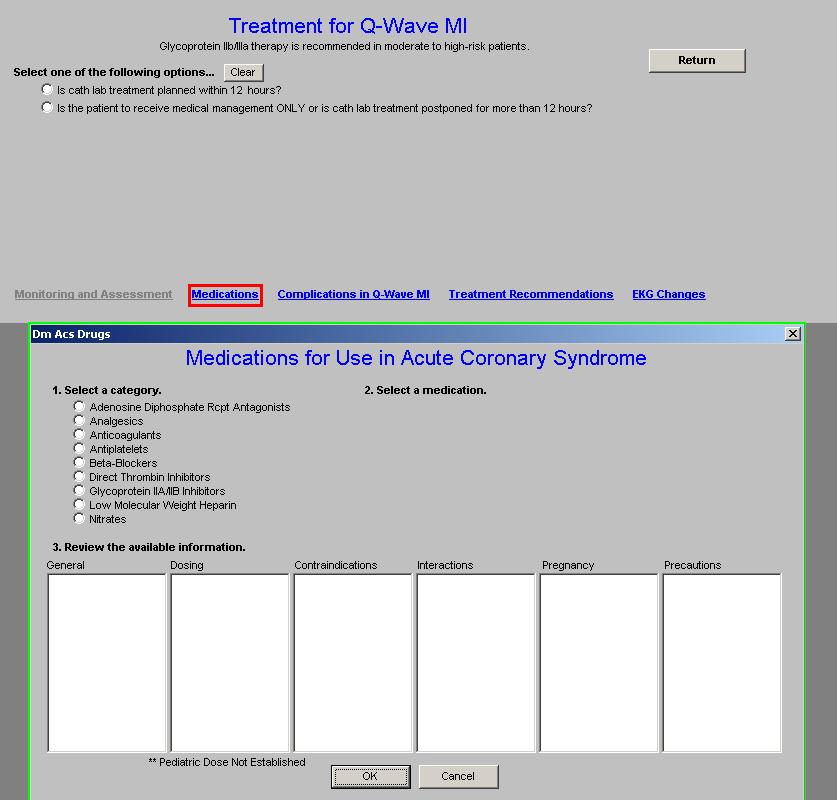
- Complications in Q-Wave IM
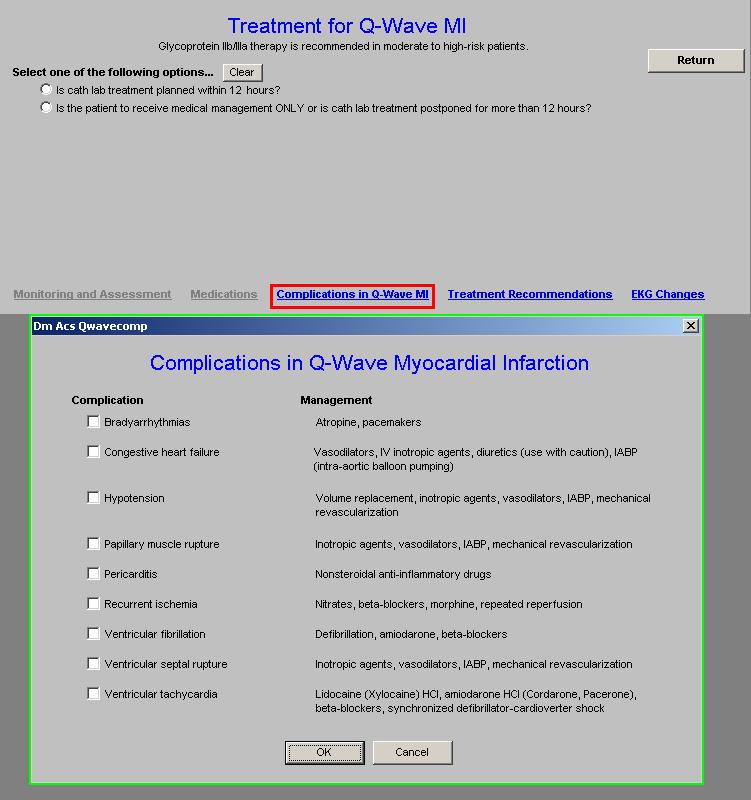
- Treatment Recommendations
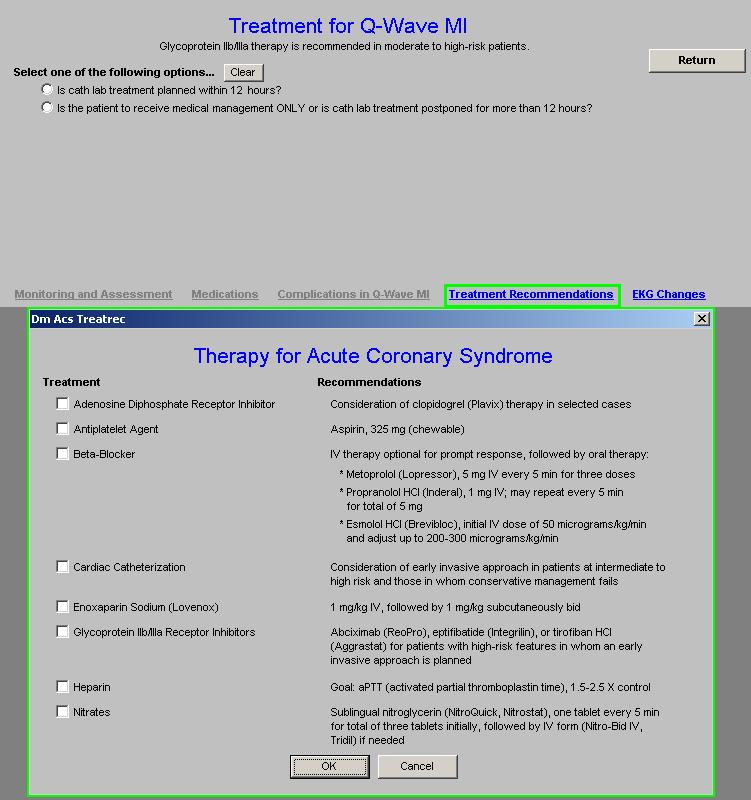
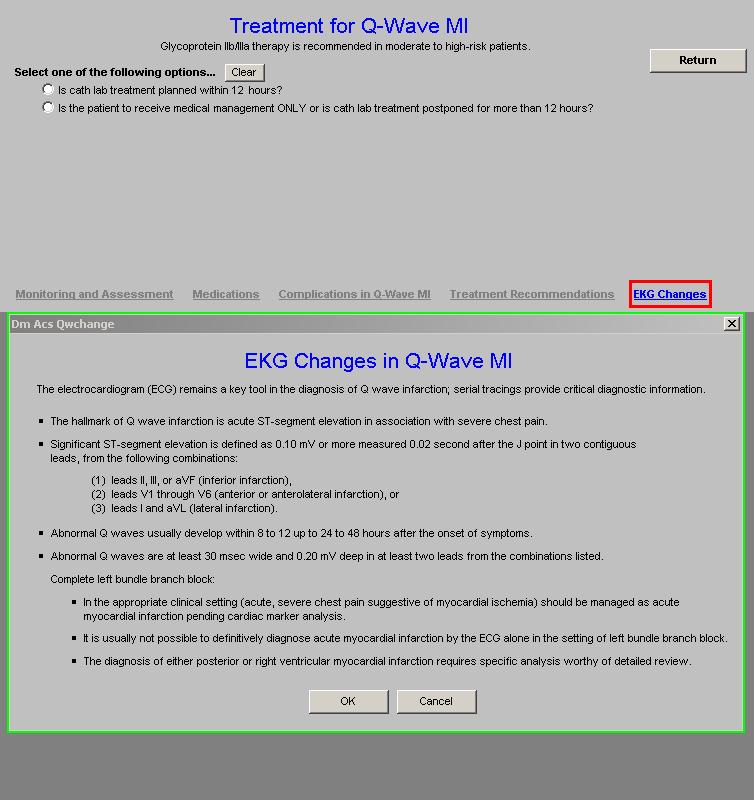
Document – this generates the summary of the use of this suite of templates.
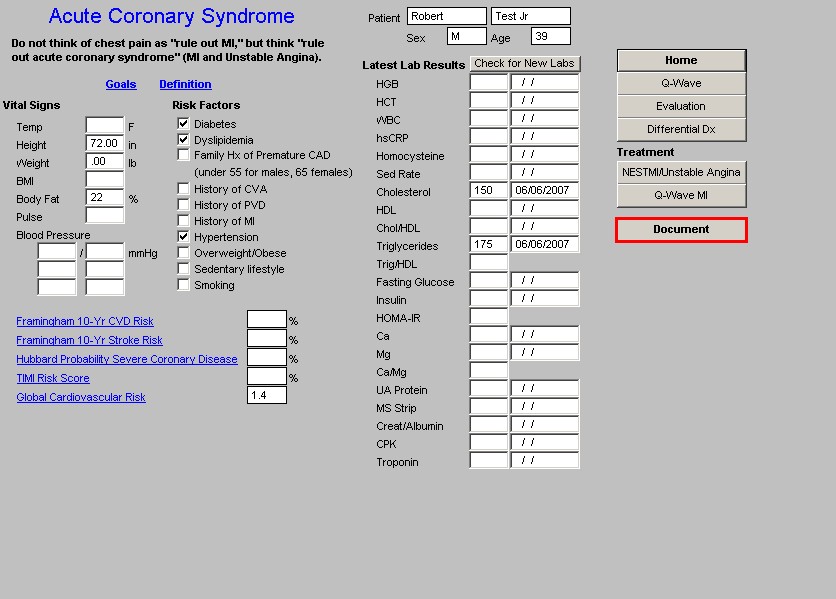
|